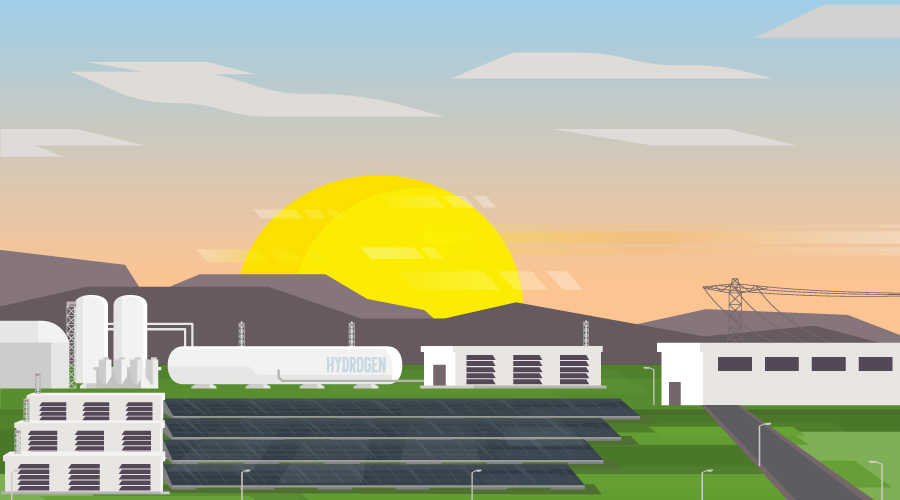Climate, Lighting, Renewable Energy Also Figure in Net-Zero Calculations
Average or expected climatic conditions can have a significant impact on net—zero energy calculations. It’s critical not only to be aware of local temperatures and seasonal shifts, but to capitalize on them. Other important net—zero issues include lighting and renewable—energy components.
In some areas of the United States, there are many hours of the year when certain types of buildings can be cooled with passive ventilation, using outdoor air to condition a space without mechanical equipment. Operable louvers can often bring in adequate amounts of outside air. Close coordination between the architect and engineer can facilitate paths for passive air movement.
When employing this approach, one significant consideration is air quality. Passive ventilation brings in large quantities of unfiltered air, so if a building is located in an area of poor air quality, passive ventilation may not be an appropriate option.
A significant building load that should be reduced to support net—zero energy is lighting, which has seen rapid gains in technology and practice. An increasingly efficient and effective way to reduce the installed wattage demand, while maintaining the desired illumination level, is to utilize LED fixtures. These fixtures are directional point sources that, together with advances in the field of optics, allow for greater control of visible light. Controlling where the light shines, and where it doesn’t, can maximize “usable” light to provide the required illumination where it is specifically needed, as opposed to generally lighting an entire space. The result is that less wattage is used than would be consumed by conventional fixtures.
Energy consumption can also be reduced by manipulating fixtures when artificial illumination is not required. In the past, this would have been as simple as using an occupancy sensor, but as energy codes have evolved, vacancy sensors, and in certain areas daylight harvesting sensors, are now required. Vacancy sensors require users to switch the artificial light on once it has been extinguished, which is different from traditional occupancy sensors that are automatic—on. Studies indicate that if a manual—on (vacancy sensor) switch is required to illuminate lights, many times the user will opt not to turn the lights on at all, provided there is enough natural light. In the daylight harvesting scenario, natural light becomes the primary source of illumination, and electric lights are dimmed. End users have the necessary illumination for the task being performed, but the space isn’t overlighted. The combination can drive down power consumption and in many cases allows fixtures to remain off during the working hours, when a majority of the workforce is in the office.
Photovoltaic Panels
With wattage reduced, it’s time to move onto renewable energy components. Photovoltaic (PV), or solar, panels are made up of multiple cells that convert light energy from the sun into usable direct current (DC), which an inverter then converts to alternating current that is distributed to power the building.
Solar panel manufacturers have increased PV efficiency. Whereas three years ago, a typical panel produced approximately 205 Watts, it is now common for a panel to exceed 320 Watts using the same footprint — a 56 percent increase in available power generation — and the technology continues to improve. With this increase in available power generation, many arrays fit on rooftops or as structures over surrounding parking areas.
Even with these improvements, existing and proposed sites often have limitations on available space, specifically in urban environments. In these instances, one option is to consider developing and operating a solar farm on available land located at a distance. This approach allows urban consumers that may not have the available square footage for a photovoltaic system on site to still develop a net—zero energy building, by pushing enough power back into the grid to counterbalance the demands of their specific facility.
Related Topics:













